In today’s hyper-connected world, we are more interested in interior design than ever before. Websites like Houzz and Pinterest allow us to amass digital collages of decorating ideas. Television networks such as HGTV and DIY transform the otherwise rather mundane activity of redecorating our living spaces into prime time TV. However, most people would be surprised to learn that the profession of interior decorating – ubiquitous today in both print and digital media – is barely 100 years old, birthed during the twilight of the Second Industrial Revolution.
Interior decorating was itself a product of technological advancement, and throughout its history has always been swayed by it. Like a pendulum swinging between extremes, interior design has tended to either embrace new technology or react against it from one period to the next. Every decorating trend of the 20th and 21st century can be understood in terms of these categories: technocentrism (embracing new technology), infusion (integrating new and old, reviving the past), and reaction (reacting against technology.)
The Dawn of an Industry (Technocentrism)
Like many types of design (e.g. modern architecture and industrial design), interior decorating began with the seminal achievement of the 19th century: mass production, which put more stuff into the hands of more people for less money.
Before mass production, the middle and lower classes didn’t put much thought into what went into their homes and how (or if) it coordinated with the walls – these were the worries of the upper classes and aristocracy who didn’t, for example, have to worry about feeding themselves.
In the Victorian era, new factories meant more and more decorative items could be sold at a lower price that the new working class (who worked in the factories) could afford. The highly ornate home interiors of the 1850s-1880s, with their luxurious wallpaper, decorative woodwork, and sumptuous fabrics, could now be emulated outside the parlors of the rich and famous.
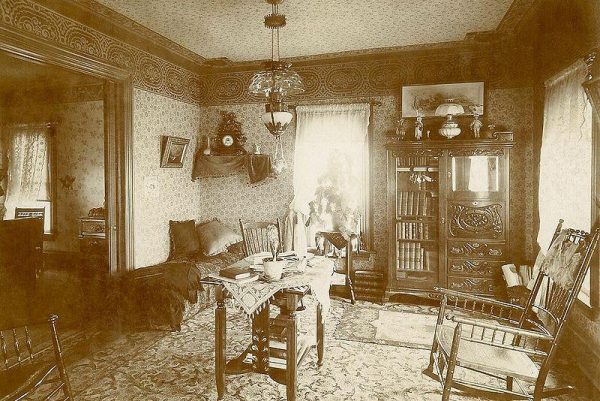
The new influx of available decorative materials made choosing between them harder and harder for the uninitiated. Enter the role of the interior decorator, a new fixture of the parlors of the upper-middle classes.
Before the 20th century, the furnishing of interiors was handled by those who worked on certain parts of them: upholsterers, cabinet-makers, or the retailers who sold the individual pieces. The role of the interior decorator, unlike the vast majority of professions at the turn of the century, was established by educated women, seeking to establish financial independence from their husbands, fathers, or other male counterparts.
Women, being already established in the realm of the home, found it easy to make careers out of orchestrating its appearance, a concept wildly popularized by the future novelist Edith Wharton in her 1897 book The Decoration of Houses. The women of the new middle classes devoured books like Wharton’s and the new technology of magazines such as House Beautiful, founded in 1896.
Influence of New Professionals (Reaction)
Elsie de Wolfe (1865-1950), was perhaps the most famous interior decorator of this early period. Her 1913 book The House In Good Taste landed her positions in the houses of the burgeoning American capitalist elite. De Wolfe’s interiors were some of the first to, through new print media such as magazines, influence general public taste.

De Wolfe’s interiors were part of a reaction amongst the upper classes against the proliferation of complex Victorian materials newly popular amongst the lesser classes (made available through mass production). She stripped away the heavy Victorian features, such as ornate wall-paneling, paintings, oriental carpets, and wallpaper, focusing instead on “light, air, and comfort.” De Wolfe made trips to Europe to bring back antique furniture from England and France on the dime of her employers (with whom she was highly sociable), a practice that would become popular amongst future interior decorators.
De Wolfe’s reduction of the complex, cluttered Victorian decoration may have been aesthetic in nature, but the public would soon follow her lead in paring down their homes, for another reason: (of course) new technology.
The Health Revolution, Taylorism, and Modernism (Technocentrism)
The discovery of viruses in the 1890s and the acceptance of germ theory as the mechanism by which diseases spread changed the way people thought about health. The era of “cleanliness is next to godliness” was well upon us, and a cluttered interior with meant more opportunities for germs to spread. Soft fabrics, for one, were considered breeding grounds for germs, and quickly went out of style in the 1910s and 20s.
This health-reform movement led to the widespread integration of indoor plumbing at the turn of the 20th century. Bathing, once a rather irregular pastime, became commonplace, and more people needed spaces for doing so. The modern hygienic bathroom was pioneered during this time, and would remain a mainstay of interior design until the late 1970s. Unlike the previous generation of bathrooms (a feature of the upper class), the germ-spreading soft fabrics were abolished. Tile replaced carpet and wood as the primary flooring material, and mass-produced porcelain fixtures such as pedestal sinks, bathtubs, and toilets became (and remain) standard. In addition, the establishment of electricity in the home reduced the clutter of gas lighting and candles, and furthered the elevation of technology as art.

Fear of disease wasn’t the only technology-induced idea that dominated this time. The concept of scientific management, promoted by Frederick Winslow Taylor (and hence called Taylorism), applied the workflow of the factory to other aspects of everyday life, emphasizing logic, work ethic, efficiency, the elimination of waste, and standardization. Taylor had a great disdain for tradition preserved for tradition’s sake or to protect the social status of particular workers with obsolete or inferior skill sets.
These were the same principles (though not from the mouth of Taylor) that inspired the birth European modernism, pioneered by Walter Gropius and Ludwig Mies van der Rohe, the principal German architects of the Bauhaus School, and by the French architect Le Corbusier.
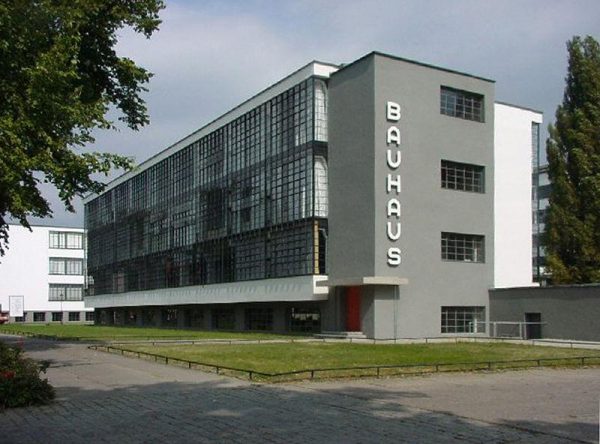
Gropius and his compatriots believed that excessive architectural ornament was no longer necessary in the machine age, and that the time had come for an architecture where form followed function. This European school (called the International Style after the fact) designed not only buildings, but their interiors as well – down to the last chair and footstool.
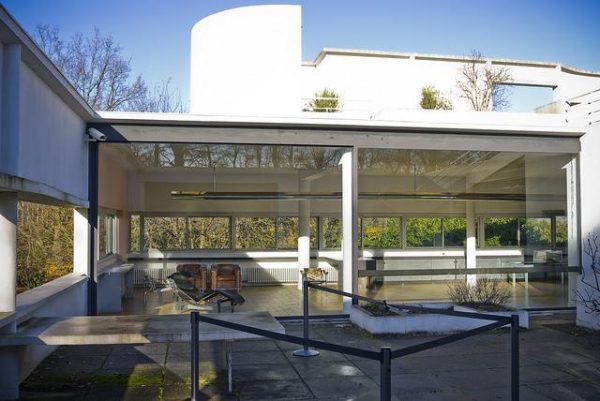
Art Deco (Infusion)
New methods of transatlantic transportation such as the ocean liner and later the airplane enabled influences from previously foreign lands such as Africa and the Middle East to come into the public eye, inspiring designers and artists from around the world to integrate the exotic with the modern – a style known as Art Deco. This was perhaps the first style to be glamorized in the new medium of film.
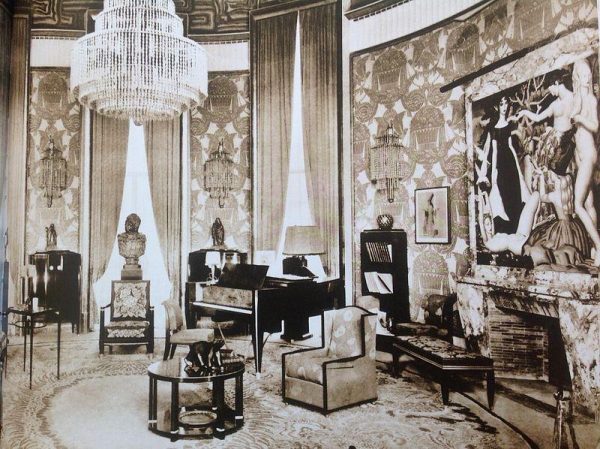
Art Deco in interior design was a short-lived movement, relegated mostly to the 1920s, before it transformed into the movement known as Streamline Moderne. Its focus as a style was to mix the luxurious and exotic with the new technological ideas of the modern age, a true example of how the past and present are infused together in interior design.
Streamline Moderne (Technocentrism)
The 1920s saw an unprecedented development in mass-production. A glut of products entered the market, giving the consumer more choices than ever before. Enter the new profession of industrial design: the creation of goods designed to be more aesthetically pleasing than their competitors, therefore outselling them.
New materials of the late 20s such as plastics, stainless steel, and chrome plating, inspired designers to apply the aesthetics of modern design to common everyday products, such as tea kettles and radios. The designers of the 1930s, partially due to the economic restrictions of the Great Depression (caused in part by a glut of goods flooding the market with no one to buy them), sought to pare down the decorative luxury of art deco into new, scientifically inspired aerodynamic forms – a process known as streamlining. The process of streamlining was partly a reaction against the excessive luxuries of the Art Deco period, which turned sour during the economic strife of the 30s. In America, European modernism had finally taken root in the imagination of architects and designers, who sought to emulate its sleek, rational aesthetic.

In the realm of interior decorating, streamlined aesthetics were integrated into the body of work of British decorators such as Syrie Maugham and Betty Joel, whose playful interiors would end up being heavily influential on the interior decorators of the late 80s and 1990s.
The 1940s (Reaction)
The horrors of World War II (engendered by, you guessed it, technology) resonated deeply with Europeans and Americans alike. In reaction, interior decorating reverted deeply into the traditional, bringing back heavy window treatments, wall to wall carpeting, and plush floral fabrics.

Returning soldiers, bolstered by the GI Bill, built houses en masse, and the age of the automobile suburb was upon us. The housing available via the GI Bill was subject to the square-footage guidelines of the Federal Housing Administration, a mere 800-1,000 square feet. Because of these small spaces, interiors in the 40s, despite their relatively ornate aesthetics, were kept uncluttered out of necessity.
Mid-Century Modernism of the 1950s and 60s (Technocentrism)
The future-forward thinking brought on by the economic optimism of mid-century after decades of economic strife manifested itself in the home. New technology completely changed the way people lived during this time. Television entered the homes of Americans everywhere, and a new way of communicating was born. The Cold War also had an effect on design thinking: the atomic age both frightened people and inspired the idea that nuclear power and the technology that came along with it would launch us into the future.
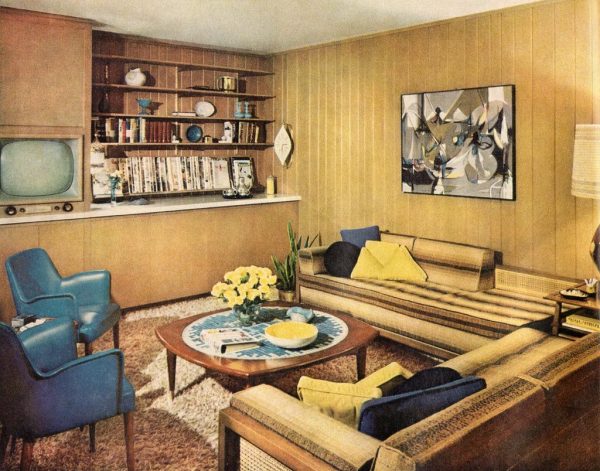
Speaking of launch: the space race was well underway, and fantastic stories of robots, interstellar travel, and above all, the nationalistic optimism that one’s home country would lead the way manifested itself in the aesthetics of Mid-Century Modern. This was the golden age of chair design, with architects such as Eero Saarinen, Charles and Ray Eames, and George Nelson creating fanciful furniture inspired by the distant future, yet still popular today.
The 1970s (Infusion)
The atomic age, as we all know, was not all roses and fun chairs. The Cold War was at a fever pitch, and, combined with a recession, an energy crisis, and the highly Vietnam War, the 70s were an era of strife and uncertainty, reflected in the design of the time.

The environmental movement emerged as a reaction against what was seen as ceaseless waste and the degradation of the natural world at the hands of industry. The overall mood of the decade was one of anxiety and desperation. Science fiction, once the realm of optimistic moon-hopping robot slayers, became increasingly dark and introspective, with the publication of mind-bending psychological and philosophical dramas by authors such as Philip K Dick and Frank Herbert.
The interior design of the 70s can only be described as eclectic and dramatic. The reintroduction of plush fabrics and heavy drapery can be interpreted as a longing for any sort of traditionalism in the almost fetishistic doomsday attitude of the day.

The heaviness of dense textiles were combined with a new generation of modern furniture that abandoned the body-oriented ergonomic designs of the previous decade with furniture designed more as stand-alone sculptures.
Wall colors became more and more dramatic, with the oranges and browns from the 60s shedding their earthy neutrality. Metallic surfaces became popular. Patterned wallpaper, another element from the past, became a focal point rather than a backdrop for art or furniture.

The 1980s (Reaction)
The 80s were, in effect, the anti-70s. The end of the energy crisis and the economic recession combined with the neoliberal economic policies of the Reagan era sent the nation on a frenzy of consumption. Postmodern architecture, inspired by the treatises by architect and theorists Robert Venturi and Denise Scott Brown, reimagined the architecture of the past within a modern framework. The indulgent luxury of the art deco period was revived in all of its metallic glory, with mirrored walls and furniture becoming extremely popular

After decades dominated by modernist design, the public vehemently swung in the opposite direction. Heavy fabrics, luxurious furniture inspired by the French Baroque, and endless floral patterns dominated home design.
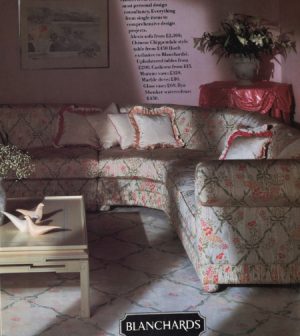
Houses got bigger, people wanted more stuff, and the bathroom was finally freed from its shackles of prudishness, becoming a pleasure palace with sunken tubs, heavy drapes, and multiple sinks and vanities.
Americans splurged on everything from chandeliers to dining chairs, and the indulgent attitude of consumption of the 1980s would continue unabated for another two decades.
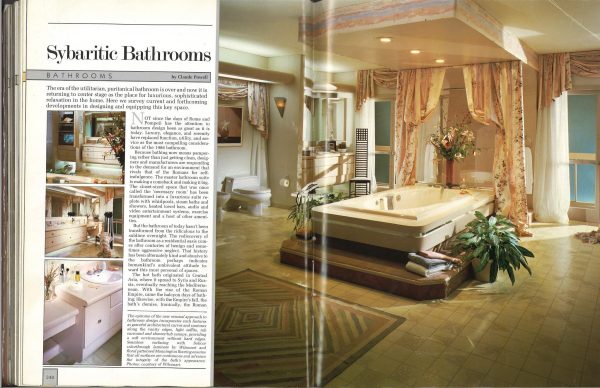
The 1990s (Infusion)
By the 1990s, the personal computer had become a mainstay in businesses and the home. The development of graphical user interfaces made computers accessible to even entry-level users. The dawn of the internet connected people like never before, and a new technocratic age was upon us.
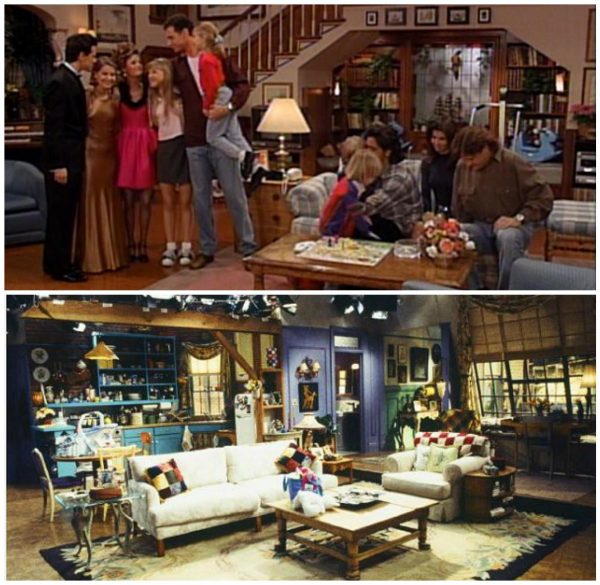
The interior decorating of the 90s combined the 80s love of frills and tradition with a light futurism inspired by the dawn of the connected age. Furniture icons Ikea and Pottery Barn came into the public eye during this time. There was an interesting 1970s revival during this time in the print and graphic arts – specifically a revival in the work of the radical Italian design group Memphis Milano, whose squiggly patterns and charming kitsch became ingrained in the new medium of the internet and the minds of a generation now college-aged.
The 2000s (Technocentrism)
The interiors of the 2000s revolve around one central technology: mortgages. The mortgage reforms of the Reagan and Clinton administrations ushered in a housing boom, and with it, almost a decade of obsession with house buying and selling. This obsession manifested itself in the rise of HGTV, whose influence inspired millions of Americans to get excited about redecorating.
Much of what HGTV focused on was shows about real estate. Hits like Designed to Sell inspired people to decorate their house as if they were staging it for sale. Though HGTV was not alone in this phenomenon, it and other new design media both online and over the air defined the style of the 2000s as one of overwhelming neutrality, with beige ruling above all. Modernism, a mainstay of interior design since the 1920s, was, for the first time, totally out of fashion. The Eames and Le Corbusier chairs disappeared into basements in favor of easy to purchase furniture sets from new franchises like Rooms To Go.
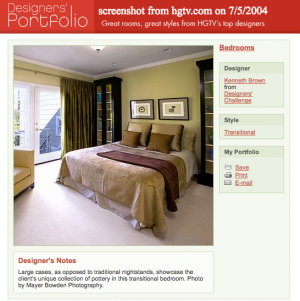
Shows like House Hunters gave consumers list of must-have assets like tall ceilings, granite countertops, wood floors, garden tubs, and double sinks, inspiring a generation of homes to be designed around these features (these would later be designated as McMansions, of course.) The 2000s were the real estate haves and have nots, and would have continued as such were it not for the subprime mortgage crisis and the coming Great Recession.
Today’s Interiors
In the age of the mobile internet, trends that would normally change on a five-year basis change on a yearly basis. The post-recession fascination with Mid-Century Modern furniture came, as modernism often does, as a reaction towards economic insecurity. The constant trading of interior design ideas leads to ever-more shifting trends, swinging vehemently between the modern and the traditional. We are living in an age of total design infusion, partially brought on by the rediscovery of old trends by young people who are now of home-buying age. What may be old and kitschy to people in their 50s and 60s is new and exciting to those who grew up during a design era defined by its (compared to previous decades) mind-numbing blandness.
As 2017 dawns upon us, it remains to be seen how the design decade of the 2010s will finish itself out. Who knows – our homes could look totally different in 2018 than they do today. Time in the fully-integrated online world moves differently, forward and backwards. If anything, the decade can be summed up in one word: exciting.



Comments (2)
Share
“…sought to pair down the decorative luxury of art deco into new, scientifically inspired aerodynamic forms – ”
*pare down
Need to notice that interior decorating and interior design are two very different things. But good article in general!